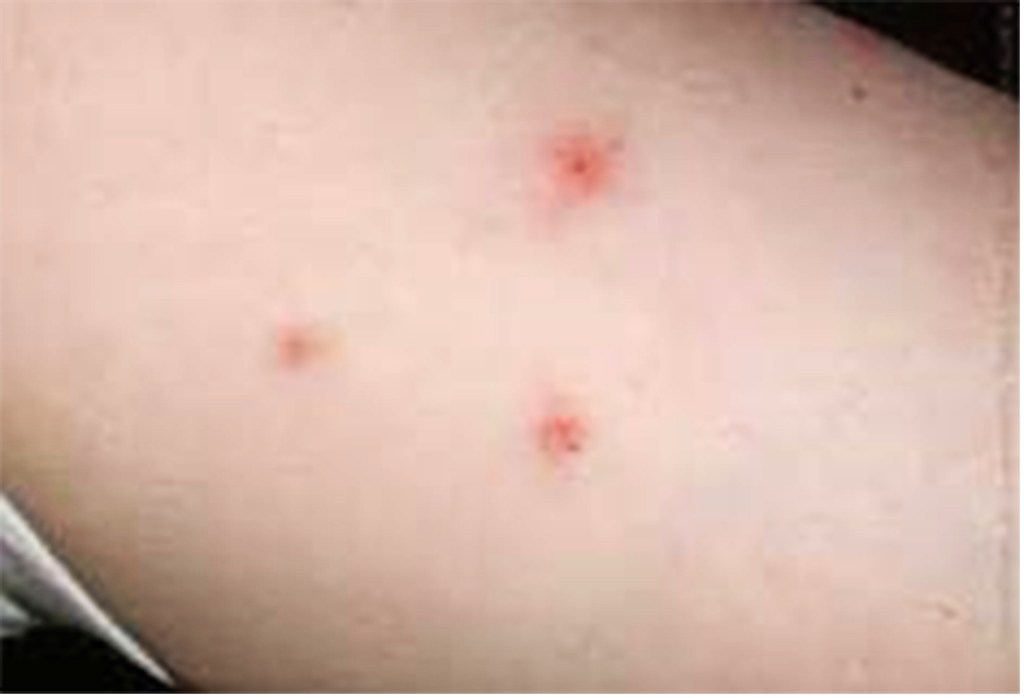Invisible bugs cause major discomfort
Published 6:00 am Wednesday, June 7, 2017

- Chiggers pierce a person's skin and inject a salivary secretion that breaks down skin cells, which are then sucked up by the mite. Welts, swelling, itching or fever usually develop within 3-6 hours after exposure and may last more than a week.
Question: This past Memorial Day weekend was memorable all right. My family spent part of the weekend working in our yard, cutting back some areas of tall grasses and basically cleaning up. We dressed for hot weather, mostly shorts, tank tops, closed toed shoes and hats. Since we have no standing water sources and are not bothered by mosquitoes other than the occasional visitor, none of us wore repellent. Other than those pesky little gnats that fly in your eyes and face, we didn’t notice any bugs that could cause us problems.
Until later that evening, that is. My entire family was suddenly itching like crazy, with little red swollen welts appearing strategic places on our bodies. Where elastic touched our bodies, near ankles, armpits, welts were more numerous — but we didn’t see anything. What in the world did we get into? And how do we keep from getting into this situation again?
Answer: I’m sympathetic to your plight as many gardeners including myself have encountered what are probably red bugs or “chiggers.”
A type of harvest mite whose larval stage attaches to humans and our pets, these widely distributed relatives of ticks are practically microscopic, about 1/100 of an inch in size. The critters have hairy bodies and are usually light to bright red in color, hence the name “red bugs.” Although adult mites are visible, especially if we sit in an area they have populated, for most, we experience only their feeding habits resulting in the unpleasant symptoms your family shared.
Chiggers, the larval stage of the red harvest mite, are normally encountered in late spring and summer where tall grasses and weeds are plentiful in woodlands, pastures, along lakes and streams, even parks and golf courses. Living near the top of grass stems and shrubbery, they’re most active on dry, sunny days.
In order to feed, the larval mite attaches itself to a host — human, animal, reptile or bird. The host does not feel the attachment as the insect migrates where clothing fits snugly or flesh is thin, tender or wrinkled. Your family’s summer attire offered the red bugs fairly easy access to armpits, waistline, backs of knees and other snug, warm, moist places.
The larvae do not (contrary to horror movies) burrow into the skin nor do they suck blood. These tiny critters pierce the skin, inject a salivary secretion that breaks down skin cells that are subsequently sucked up by the mite. Welts, swelling, itching or fever usually develops within 3-6 hours after exposure, and may last more than a week.
While red bugs are fixtures in the southeast, we can take actions to reduce their populations on our properties. Mowing regularly and managing thick vegetation helps. Concentrate chemical insecticidal treatments on grassy areas, low bushes, near doghouses, and other potential chigger populations.
As with many situations, the best defense against chiggers is a good offense. Avoid them if possible, repel them with material containing DEET or similar, and keep moving when walking through areas that could harbor the bug. While it sounds pleasant, lying down in the grass could be our undoing when contemplating red bug environments.
Deal with itchy welts by applying calamine lotion or other itch relief products after taking a hot shower or bath with lots of soap to dislodge the tiny terrors.
For information on topics related to the home and garden, contact any office of the Alabama Cooperative Extension System. The Limestone County Office is located at 1109 West Market Street in Athens. Office hours are 8 a.m.-4:30 p.m. Monday through Friday. For more information, call 256-232-5510 or visit www.aces.edu.





